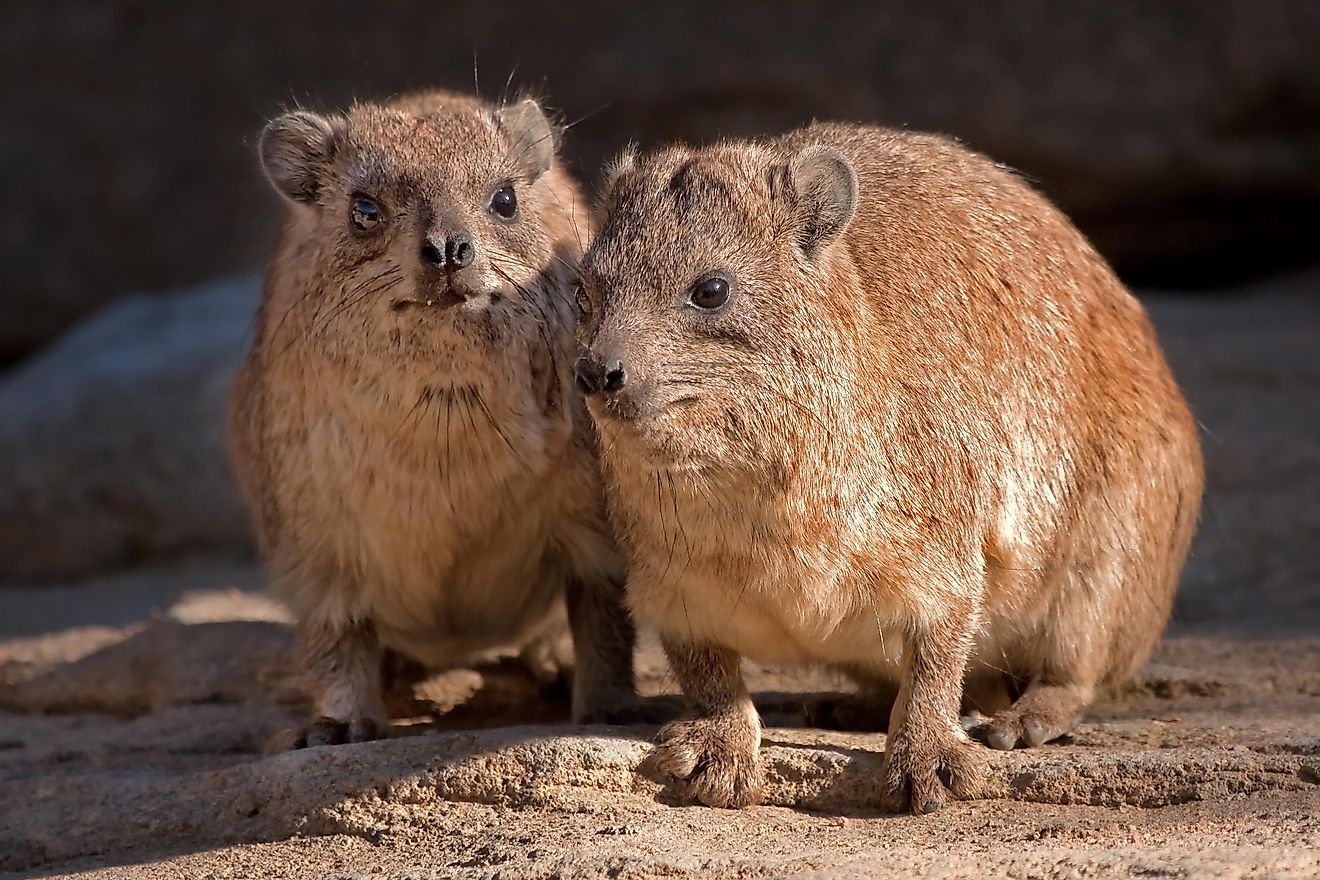Rock Hyrax Facts: Animals of Africa

5. Physical Description
The rock hyrax is a tailless mammal that is said to resemble a large guinea pig. It has short, dense, brownish-grey fur, with the coloration of its underbelly being lighter. Around its body, it has long "guard hairs" sticking out to help it feel its environment. The mature rock hyrax, according to ARKive research, weighs from around 4 to 12 pounds (1.8 to 5.4 kilograms), and its length ranges between 1.3 and 1.9 feet (39.5 and 58 centimeters). It has short legs and rounded toes, with a long grooming claw on the inner toe of the rear foot. This claw is for scratching and picking through its hair. The soles of the feet of the rock hyrax are moist and rubber-like, which helps proffer better grip in rocky habitats. Its has strong molars for grinding vegetation, and two large incisor teeth that look like small elephant tusks.
4. Diet
As an herbivore, the rock hyrax feeds on grass, fruits, and leaves. Grass makes up 78% of its diet during the wet seasons, which declines to 57% in the dry seasons. When feeding, rock hyraxes form a circle, and their heads point to the outside of the circle in order to watch out for predators. The rock hyrax feeds by grazing and foraging on various plant species. Its other dietary staples in the highlands includes the giant lobelia and daisy species, while in lowlands young shoots, fruits, berries, and figs suffice as complementary foods. During droughts, they will settle for consuming lichens, bark, and liverworts.
3. Habitat and Range
The habitat of the rock hyrax varies considerably, ranging from dry savanna to dense rainforest. In these ecological settings, rocks, boulders, and cliffs provide shelter from the environment and protection from predators. Rock hyraxes' presence in these places is signified by crystallized urine, which leaves white patches on the rocks.The rock hyrax is found throughout almost all of the African continent with exception of the island of Madagascar, parts of northwest Africa, and the Congo Basin. It is the most well-adapted and widely dispersed of all of the hyrax species. According to the International Union of Conservation of Nature (IUCN) Red List of Threatened Species, the rock hyrax is a species of "Least Concern". Poaching for their skin and habitat encroachment, however, are increasingly becoming threatening issues to their populations.
2. Behavior
The rock hyrax is a social animal, and one single community can have as many of 80 individuals living together, given that a sufficient food supply and range size are available. A dominant male controls one colony that has females and offspring. They also watch out for predators, such as snakes, eagles, jackals, and feral canines. To defend a territory, the male rock hyrax produces guttural grunts and sharp barks if danger is looming to warn others. Each day starts with sunbathing for several hours while huddled together. Once the rock hyraxes are warm, they then go browsing for food.
1. Reproduction
Sexual maturity for the rock hyrax begins at 17 months after birth. To reproduce, one dominant male rock hyrax calls and approaches a willing female while weaving its head, with its penis and dorsal spot erect. A willing female backs into the male, and presses her anogenital region against his breast and flank. The male rock hyrax grasps the female with his forelegs during copulation. After successful breeding, the rock hyrax's gestation period lasts up to 8 months, and females give birth within dark crevices. In one birth, up to 6 young ones may be delivered. The rock hyrax has a typical lifespan of 12 years.







